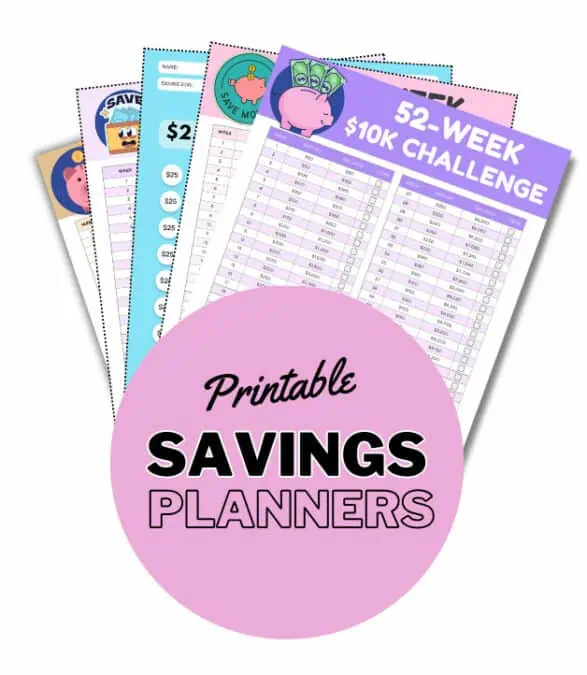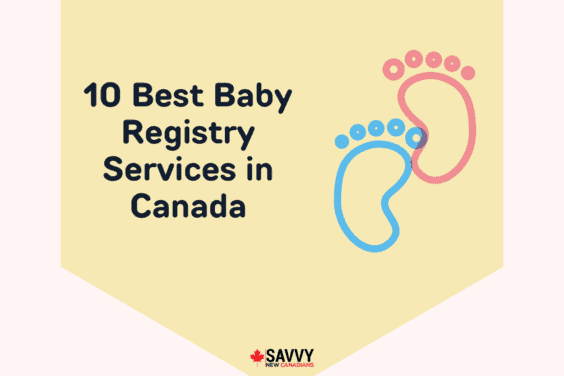The 52-week money-saving challenge is a super easy savings strategy that lets you save more than $1,300 by the end of the year. Starting with setting aside as little as $1 on the first week, this challenge is completely doable for everyone and is a great way to start saving money.
This article covers everything you need to know about the 52-week challenge, including how it works, how much you’ll save at the end, and how you can stay on track.
Key Takeaways
- The 52-week challenge requires you to save the dollar amount corresponding to the week you’re on in the challenge’s year every week. You start by saving $1 in the first week, $2 in the second week, and continue until you’ve saved $52 in the last week.
- By the end of the original challenge, you’ll save a total of $1,378. However, you can always save more money by adjusting how much you save per week.
- To stay on track with the 52-week challenge, set regular reminders, don’t give up if you miss several weeks of savings, and plan a reward for yourself by the end of the challenge.
The 52-Week Money-Saving Challenge – An Overview
The 52-week money-saving challenge is a simple and effective year-long savings plan that requires you to set aside an amount of money corresponding to the week you’re currently on in the challenge.
You begin by saving $1 in the first week and $2 in the second week and continue this incremental pattern until you’ve set aside $52 for the final week. If you stay on track with the challenge throughout the year, you’ll save a total of $1,378 at the end.
Of course, as with most money-saving challenges, the 52-week challenge also has variations, which I’ll talk more about later.
This is How the 52-Week Money-Saving Challenge Works
As mentioned earlier, the 52-week challenge is a savings challenge that encourages you to save $1 more than you’ve saved the week before. It all starts with setting aside $1 on the first week and staying on track until you’re on the 52nd week, where you save $52.
If you want a no-brainer way to start this challenge, simply follow these steps:
Step 1: Choose your preferred mode of savings
You can choose to slide your savings into a good old piggy bank or opt for the more modern approach of using a savings account. Either way, just make sure that you can easily deposit your savings into your preferred method weekly.
Step 2: Choose a specific start date
This challenge is one of the least restrictive money-saving challenges out there, but it still requires a year-long commitment. That said, it’s best to set a specific date to save the first dollar of this challenge and to continue from there on.
Many people love starting this challenge in the first week of the year. However, I believe that when it comes to saving money, the earlier you start, the better.
Step 3: Save money one week at a time
Of course, there’s no stone-set rule on which day of the week you should deposit your weekly savings for this challenge, but I highly recommend sticking to the same weekday, as it makes staying consistent easier.
For example, you can choose Saturday if that’s when you do most of your weekly resets, such as updating your budget planners, but any day is fine.
Once you’ve started saving money on the first and second week, simply continue doing so until you reach the 52nd week.
| Week Number | Weekly Deposit | Total Savings |
| Week 1 | $1 | $1 |
| Week 2 | $2 | $3 |
| Week 3 | $3 | $6 |
| Week 4 | $4 | $10 |
| Week 5 | $5 | $15 |
| Week 6 | $6 | $21 |
| Week 7 | $7 | $28 |
| Week 8 | $8 | $36 |
| Week 9 | $9 | $45 |
| Week 10 | $10 | $55 |
| Week 11 | $11 | $66 |
| Week 12 | $12 | $78 |
| Week 13 | $13 | $91 |
| Week 14 | $14 | $105 |
| Week 15 | $15 | $120 |
| Week 16 | $16 | $136 |
| Week 17 | $17 | $153 |
| Week 18 | $18 | $171 |
| Week 19 | $19 | $190 |
| Week 20 | $20 | $210 |
| Week 21 | $21 | $231 |
| Week 22 | $22 | $253 |
| Week 23 | $23 | $276 |
| Week 24 | $24 | $300 |
| Week 25 | $25 | $325 |
| Week 26 | $26 | $351 |
| Week 27 | $27 | $378 |
| Week 28 | $28 | $406 |
| Week 29 | $29 | $435 |
| Week 30 | $30 | $465 |
| Week 31 | $31 | $496 |
| Week 32 | $32 | $528 |
| Week 33 | $33 | $561 |
| Week 34 | $34 | $595 |
| Week 35 | $35 | $630 |
| Week 36 | $36 | $666 |
| Week 37 | $37 | $703 |
| Week 38 | $38 | $741 |
| Week 39 | $39 | $780 |
| Week 40 | $40 | $820 |
| Week 41 | $41 | $861 |
| Week 42 | $42 | $903 |
| Week 43 | $43 | $946 |
| Week 44 | $44 | $990 |
| Week 45 | $45 | $1,035 |
| Week 46 | $46 | $1,081 |
| Week 47 | $47 | $1,128 |
| Week 48 | $48 | $1,176 |
| Week 49 | $49 | $1,225 |
| Week 50 | $50 | $1,275 |
| Week 51 | $51 | $1,326 |
| Week 52 | $52 | $1,378 |
Improve Finances This Year (Save up to $10,000 Easily)!
Finding it challenging to build an emergency fund and grow your savings? These savings planners make it easy. Pick a challenge and a financial goal, and start putting money aside on a schedule. These planners make it easy to track your progress and stay accountable. From saving $200, $500, $1,000, $2,000, $5,000, and even $10,000, you will see real progress if you get started!
Here’s what you get:
- 13 beautiful printables, including:
- Five 100-day challenges (various amounts)
- Savings trackers
- 26- and 52-week challenges (various amounts)
- 30-day savings planners
- Sample templates
Visit our shop to get your copies.

This is How Much Money You’ll Save At the End
If you stick with the original version of the challenge that starts with saving $1 on the first week and ends with setting aside $52 on the last week, you’ll be saving a total of $1,378 by the end of the challenge.
However, you can easily increase this amount by also increasing how much you save every week. If you double the designated amount corresponding to your week, for example, you’ll also be saving double the original amount by the end of this challenge and have $2,765 instead.
Want to reach a specific savings target by the end of the year?
Simply follow this formula to know how much you need to save weekly during the 52-week challenge to achieve your financial goal:
Weekly Savings = Target Savings ÷ 52 Weeks
Pro tip: Make sure to round up the first decimal place so you’ll never fall a couple of dollars short of your savings goal.
Tips to Stay On Track
I’m no stranger to failing money-saving challenges like this one. Fortunately, I’ve found significant success with savings plans that incorporated these strategies:
#1: Set a regular reminder: Use calendar apps or kindly ask your families or friends to remind you to contribute to your savings consistently.
#2: Don’t give up even if you miss several deposits. Even if you’ve missed several weeks of savings, you can always continue the challenge by simply depositing the amounts for the weeks you missed.
#3: Plan a reward for yourself at the end: Giving yourself a wait-worthy incentive after completing your savings goal is likely to motivate you to stay committed to the entire challenge.
#4: Flip the order: One of my favourite hacks for this challenge is to reverse the order of the amounts you save weekly. With this tip, you’ll set aside the biggest amount on the first week and only save a couple of bucks weekly by the end of the year, making the challenge easier the longer you stay on track.
Advantages of the 52-Week Money-Saving Challenge
Still not sold on the idea of starting the 52-week money-saving challenge? Here are the top advantages of successfully completing this year-long savings plan:
- You’ll have saved $1,300 by the end of the year.
- It’ll likely encourage you to establish healthier saving and spending habits.
- The challenge is highly customizable, making it easy to fit your saving goals.
Beyond the financial benefits, starting this challenge can also cultivate your discipline, consistency, and patience, which are valuable life skills.
The Few Downsides to the 52-Week Money-Saving Challenge
Not gonna lie– although I highly recommend this money-saving challenge, it still has its downsides. Here are some of its biggest cons:
Not The Ideal Standalone Savings Strategy
The 52-week challenge is a great way to learn how to save or supplement your already-established savings routine. However, it’s far from being an ideal standalone savings plan.
A good rule of thumb is that you should save 10% to 20% of your monthly income. If you set aside less than this threshold, as this 52-week challenge suggests, you likely won’t be saving enough for emergencies or long-term financial goals.
To achieve your financial goals faster, consider using tools like our printable budget planners or printable savings planners. With these customized savings and budgeting plans, you’ll know exactly how much and when to set aside money to reach your specific saving targets.
A budgeting app like YNAB also helps.
Cannot Be Automated
I’ve always preferred automating saving deposits using my mobile banking app. Doing so relieves me from the extra work of actually remembering to set aside money, which automatically sets me up for success when completing saving challenges.
Unfortunately, though, since the 52-week challenge doesn’t involve fixed weekly savings amounts, you can’t simply save a specific amount weekly through automated processes.
You can sidestep this issue by breaking your target savings amount into 52 weekly equal deposits.



